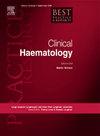CAR assembly line: Taking CAR T-cell manufacturing to the next level
IF 2
4区 医学
Q3 HEMATOLOGY
引用次数: 0
Abstract
The widespread adoption of chimeric antigen receptor (CAR) T-cell therapy has been limited by complex, resource-intensive manufacturing processes. This review discusses the latest innovations aiming to improve and streamline CAR T-cell production across key steps like T-cell activation, genetic modification, expansion, and scaling. Promising techniques highlighted include generating CAR T cells from non-activated lymphocytes to retain a stem-like phenotype and function, non-viral gene transfer leveraging platforms like transposon and CRISPR, all-in-one fully automated bioreactors like the CliniMACS Prodigy and the Lonza Cocoon, rapid CAR T-cell manufacturing via abbreviating or eliminating ex vivo T-cell culture, implementing decentralized point-of-care automated manufacturing platforms, and optimizing centralized bioreactor infrastructure integrating end-to-end automation. Adoption of these emerging technologies can reduce production costs and timelines while enhancing product quality and accessibility. However, significant knowledge gaps persist regarding the feasibility, superiority, and optimal protocols for effectively incorporating many emerging techniques into widespread clinical practice. Further validation through clinical studies is still needed for many of these novel approaches.
CAR装配线:将CAR - t细胞制造提升到一个新的水平
嵌合抗原受体(CAR) t细胞治疗的广泛采用受到复杂的资源密集型制造工艺的限制。这篇综述讨论了旨在改善和简化CAR - t细胞生产的最新创新,包括t细胞激活、基因修饰、扩增和缩放等关键步骤。重点强调的有前途的技术包括从非活化淋巴细胞中生成CAR - T细胞以保持干细胞样表型和功能,利用转座子和CRISPR等非病毒基因转移平台,CliniMACS Prodigy和Lonza Cocoon等多功能全自动生物反应器,通过缩短或消除体外T细胞培养来快速制造CAR - T细胞,实施分散的护理点自动化制造平台。优化集中式生物反应器基础设施,集成端到端自动化。采用这些新兴技术可以降低生产成本和时间表,同时提高产品质量和可访问性。然而,关于将许多新兴技术有效地纳入广泛的临床实践的可行性、优越性和最佳方案,仍然存在重大的知识差距。许多新方法仍需要通过临床研究进一步验证。
本文章由计算机程序翻译,如有差异,请以英文原文为准。
求助全文
约1分钟内获得全文
求助全文
来源期刊
CiteScore
4.20
自引率
0.00%
发文量
42
审稿时长
35 days
期刊介绍:
Best Practice & Research Clinical Haematology publishes review articles integrating the results from the latest original research articles into practical, evidence-based review articles. These articles seek to address the key clinical issues of diagnosis, treatment and patient management. Each issue follows a problem-orientated approach which focuses on the key questions to be addressed, clearly defining what is known and not known, covering the spectrum of clinical and laboratory haematological practice and research. Although most reviews are invited, the Editor welcomes suggestions from potential authors.

 求助内容:
求助内容: 应助结果提醒方式:
应助结果提醒方式:


